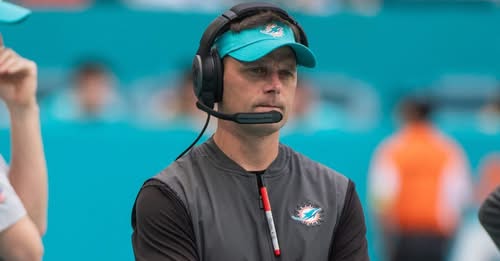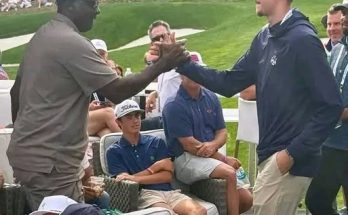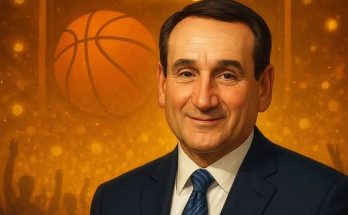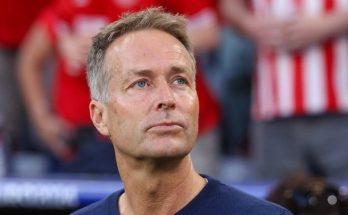Josh Boyer’s tenure as the Miami Dolphins’ defensive coordinator from 2020 to 2022 was a period marked by both promise and challenges, reflecting the broader struggles and successes of the franchise during those years. His connection to Matt Patricia and their shared history with the New England Patriots added an intriguing layer to his time in Miami, as the Dolphins sought to replicate the defensive success of the Patriots dynasty. Boyer’s journey from New England to Miami, his defensive philosophy, and the outcomes of his leadership provide a compelling case study in the complexities of NFL coaching and the difficulties of sustaining success in a highly competitive league.
Boyer’s coaching career began long before his arrival in Miami. He cut his teeth in the NFL as a defensive assistant with the New England Patriots, where he worked under Bill Belichick and alongside Matt Patricia, who would later become the Patriots’ defensive coordinator and head coach of the Detroit Lions. Boyer’s time in New England was formative, as he absorbed the Patriots’ defensive principles—discipline, versatility, and an emphasis on situational football. These lessons would shape his approach when he was promoted to defensive backs coach in 2012, a role he held until 2019. During this stretch, the Patriots’ secondary was consistently among the league’s best, with players like Devin McCourty, Stephon Gilmore, and Malcolm Butler thriving under his guidance.
When Brian Flores, another Patriots disciple, was hired as the Dolphins’ head coach in 2019, he brought Boyer with him as the defensive pass game coordinator and cornerbacks coach. The Dolphins were in the early stages of a rebuild, and Flores sought to instill a culture reminiscent of New England’s—hard-nosed, detail-oriented, and adaptable. In 2020, Boyer was promoted to defensive coordinator, taking over a unit that showed flashes of potential but lacked consistency. His first season in the role was a mixed bag; the Dolphins ranked in the middle of the pack in most defensive categories but excelled in creating turnovers, finishing sixth in the league with 29 takeaways. This aggressive, ball-hawking style was a hallmark of Boyer’s philosophy, emphasizing disguised coverages and opportunistic play from the secondary.
The 2021 season was arguably the high point of Boyer’s tenure. The Dolphins’ defense emerged as one of the most disruptive in the NFL, leading the league in turnovers forced (33) and finishing near the top in sacks (48). Key players like cornerback Xavien Howard, safety Jevon Holland, and linebacker Jerome Baker flourished under Boyer’s system. Howard, in particular, continued his ascent as one of the league’s premier cover corners, earning Pro Bowl honors. The defense’s ability to generate pressure without relying heavily on blitzes was a testament to Boyer’s schematic creativity, as he often used simulated pressures and stunts to confuse opposing quarterbacks. Miami’s late-season surge, which included a seven-game winning streak, was fueled in large part by the defense’s dominance.
However, the 2022 season brought significant regression. The Dolphins’ defense struggled mightily, particularly against the run, and ranked near the bottom of the league in several key metrics. Injuries played a role, but the unit also appeared to lack the same level of cohesion and execution that had defined the previous year. Some critics pointed to Boyer’s scheme as being too predictable, with opponents seemingly adapting to his tendencies. The decline was stark enough that when Flores was fired at the end of the season, Boyer’s future became uncertain. New head coach Mike McDaniel, an offensive-minded coach from the Kyle Shanahan tree, opted to move on from Boyer, signaling a desire for a fresh defensive approach.
Boyer’s connection to Matt Patricia is worth exploring, as it sheds light on the challenges faced by coaches who emerge from the Belichick coaching tree. Patricia, like Boyer, was highly regarded during his time as New England’s defensive coordinator, but his stint as the Lions’ head coach was largely unsuccessful. Similarly, Flores and Boyer found it difficult to sustain success in Miami, raising questions about whether the Patriots’ system is as easily transferable as some assume. The NFL is a league of constant evolution, and what works in one organization—especially one as uniquely structured as the Patriots—doesn’t always translate elsewhere. Boyer’s experience underscores the importance of adaptability and the need for coaches to tailor their systems to their personnel rather than forcing a square peg into a round hole.
Another factor in Boyer’s tenure was the Dolphins’ roster construction. While the defense had standout players like Howard and Holland, it also had clear weaknesses, particularly in the front seven. The lack of a dominant interior defensive lineman or a consistent edge rusher outside of Emmanuel Ogbah (when healthy) made it difficult for Boyer to replicate the Patriots’ model of controlling the line of scrimmage. In New England, Belichick and Patricia had the luxury of players like Vince Wilfork, Trey Flowers, and Dont’a Hightower—versatile, high-IQ defenders who could execute complex game plans. Miami’s personnel, while talented in spots, didn’t always fit the same mold, which may have limited Boyer’s effectiveness.
Despite the challenges, Boyer’s impact on the Dolphins shouldn’t be overlooked. He helped develop several young players, including Holland, who looks like a future star at safety, and undrafted gems like Nik Needham, who became a reliable contributor in the secondary. His ability to maximize the talent at his disposal was evident during the 2021 season, when the defense carried the team during stretches of offensive inconsistency. Even in 2022, amid the struggles, there were moments where the unit showed flashes of its potential, particularly in games where the pass rush was able to disrupt opposing quarterbacks.
Looking ahead, Boyer’s future in the NFL remains uncertain. His pedigree as a defensive mind is strong, but the league’s tendency to favor new trends and younger coaches could make it difficult for him to land another coordinator job immediately. However, his experience and track record suggest that he could be a valuable asset to a team looking for a seasoned defensive assistant, particularly one with expertise in secondary play. Whether he resurfaces in a role similar to his time in New England or gets another shot as a coordinator will depend on how teams view his tenure in Miami and whether they believe his system can thrive with the right personnel.
In the end, Josh Boyer’s time with the Dolphins was a microcosm of the NFL’s relentless demand for results. His highs—like the 2021 season—demonstrated his capability as a defensive play-caller, while his lows highlighted the fine line between success and failure in the league. His connection to Matt Patricia and the Patriots’ legacy added an interesting dimension to his story, but ultimately, his tenure in Miami was judged on its own merits. For Dolphins fans, Boyer’s era was a rollercoaster, offering moments of excitement and frustration in equal measure. For Boyer himself, it was another chapter in a coaching career that has been defined by both achievement and the relentless pursuit of improvement.



